Spend Under Management: The Full Guide


One of the most important financial aspects you should track and work on improving is spend under management (SUM).
In simpler terms, SUM is about making sure your company’s spending is well-monitored, follows the rules, and gets the best bang for your buck.
The higher this number, the better visibility you have into spend, which gives you opportunities to save money, reduce risks, and much more.
Today, we’re going to fill all your knowledge gaps on spend under management, explain why you need to focus closely on this metric, and introduce some technology that can help you bring more spend under control.
Let’s get started.
Spend under management (SUM) refers to how much of your company’s total spending is closely monitored and managed by your procurement team.
SUM involves three main tasks:
But it’s not as straightforward as it sounds.
Before you can achieve this, you need to clearly define what spend under management is, what it involves, and ensure all stakeholders agree on its scope.
Spend under management is often confused with other metrics like spend under influence.
Spend under influence refers to the spending that procurement can impact or guide, even if it is not directly managed by it.
For example, you might influence spending by setting policies, preferred supplier lists, or guidelines that other departments follow, but you don’t handle every transaction.
Another related concept is addressable spend, which is the portion of your organization’s total spending that you can potentially influence or control.
This includes all categories where you can negotiate contracts, set guidelines, or manage suppliers to improve value.
It excludes non-influenceable costs like taxes, statutory fees, or pre-existing contractual obligations that procurement cannot change.
Nils Lundgren, Head of Sales Nordics at Onventis, suggests that you should consider a larger portion of your total spend as addressable.
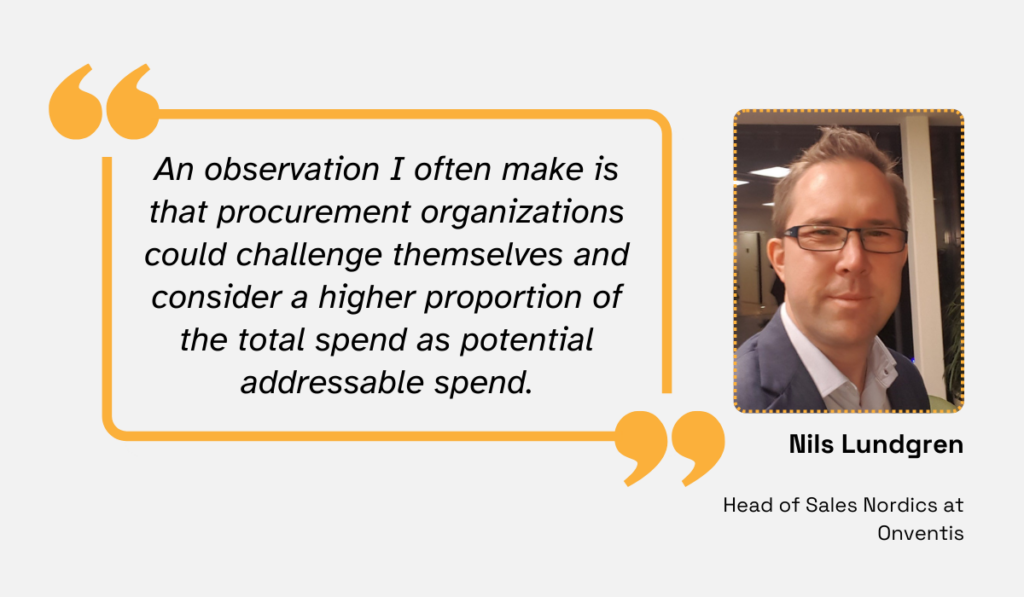
Illustration: Veridion / Quote: Linkedin
Why?
Because it would give you a chance to control more of the total spend and, therefore, make better spending decisions across the company.
On the flip side, unmanaged spend is the portion of organizational spend that occurs outside of procurement policies.
This can result from a lack of visibility, decentralized purchasing practices, or non-compliance with procurement policies.
When this happens, it often leads to maverick spend, where employees bypass official supplier lists and make purchases from unapproved vendors or outside of established contracts.
In the end, your goal with spend under management is to reduce unmanaged spend and bring more of it under your control.
You will discover later on just how beneficial that is.
Calculating spend under management is straightforward.
You divide the total spend managed by your department by the total spend of your organization and multiply it by 100.
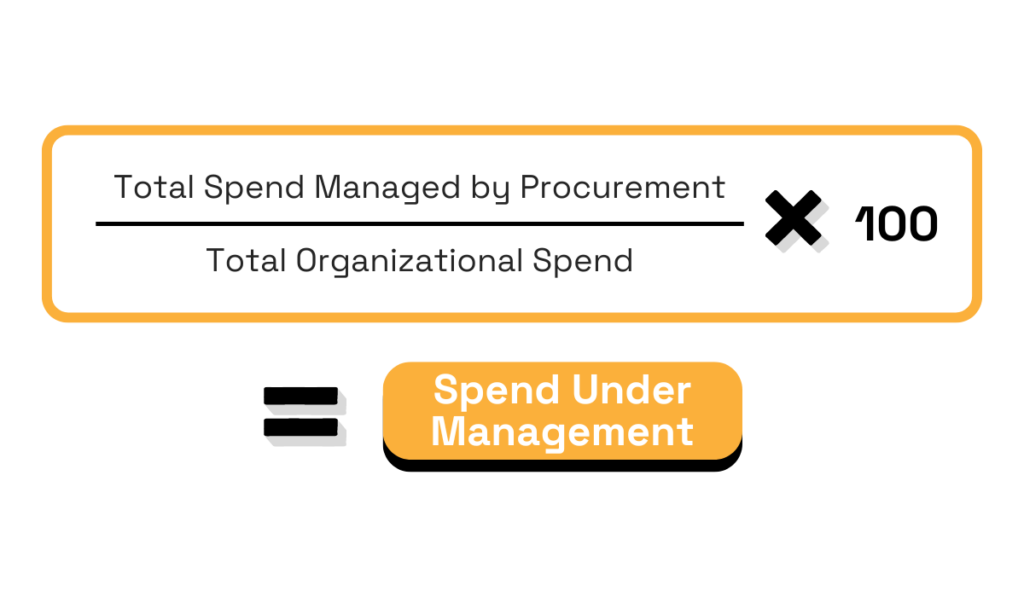
Source: Veridion
The higher this number, the more control you have over spend.
Better control over spending offers several key benefits: increased cost savings, stronger supplier relationships, and reduced risk.
Let’s explore each of these in more detail.
When you have more spend under management, you’re opening the door to significant cost savings.
Essentially, you have the power to negotiate better deals because you control the purse strings.
And this matters now more than ever. Cost reduction and generating savings are again a top priority for procurement leaders, according to The Hackett’s Group.
Procurement Leaders’ Strategic Planning Guide 2024 shares the same insights.
Three key priorities for 2024 are:
To make an impact in these areas, procurement teams need to manage a larger portion of the company’s spending. Teams that do, operate more efficiently.
In fact, Procurement Leaders’ research shows that those managing over 75% of their spend save more money and deliver better value and efficiency compared to others.
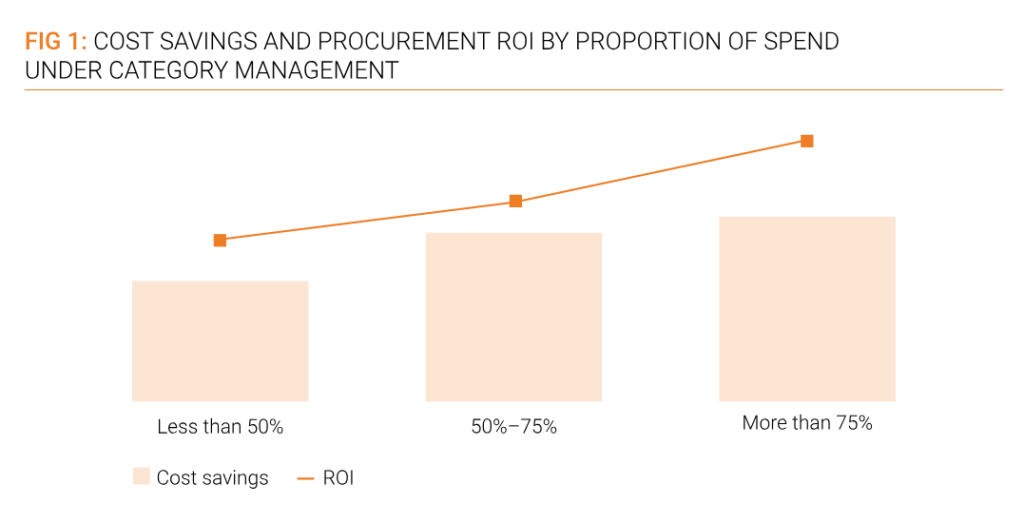
Source: Procurement Leaders
But how does better spend under management increase cost savings?
It’s simple.
When you have control and visibility over a large portion of your spend, you know exactly where your money is going, when, and to which suppliers.
This helps you generate cost savings through volume discounts, consolidating orders, or bulk purchasing.
For example, if your company used to place multiple small orders for raw materials throughout the month, consolidating these into a single, larger order can lead to significant savings.
Suppliers might offer discounts for larger volumes, and you also save on shipping and handling costs.
Moreover, having more spend under procurement’s control reduces maverick spending.
This is huge for generating cost savings, given that organizations report losing up to 16% of negotiated savings when maverick spending occurs.
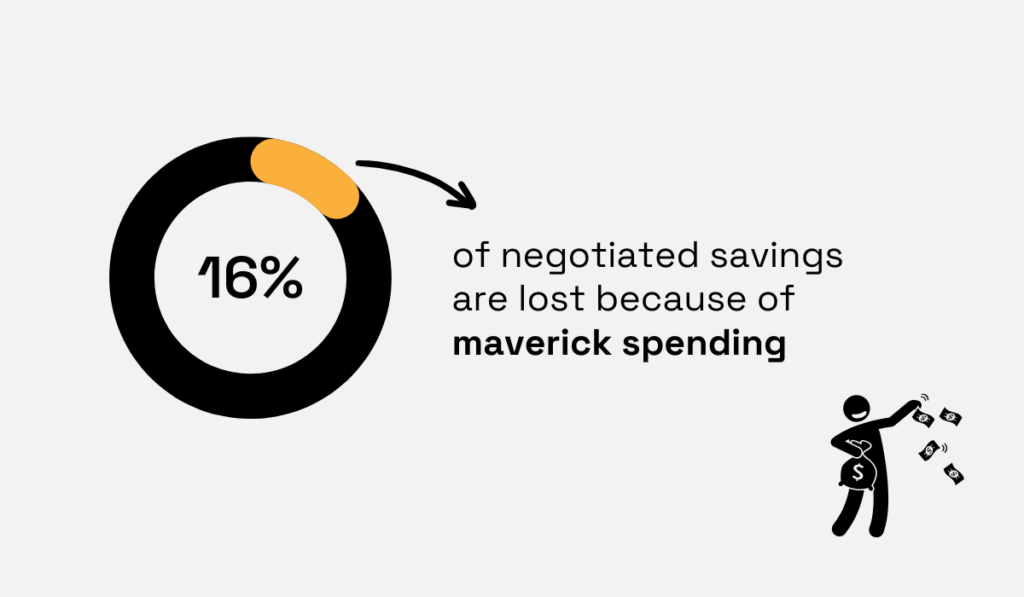
Illustration: Veridion / Data: The Hackett Group
Another way you can bring more spend under management is with the right technology.
This also generates savings.
We can use YMCA of the Greater Twin Cities, a youth organization from Minneapolis as an example.
They were struggling with spending control due to employees using P-Cards without oversight.
When they implemented Basware’s P2P technology (that is, automated processes), they dramatically improved their spend visibility and control.
In just 18 months, they went from 0% to 50% spend management.
And the best part? They saw a 25% rise in savings.
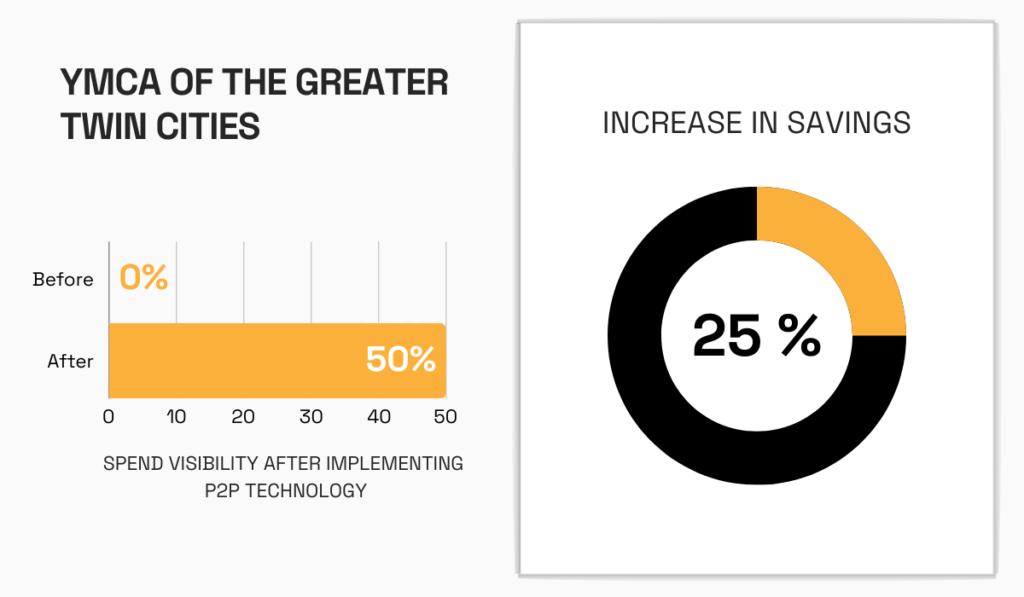
Illustration: Veridion / Data: Basware
All in all, by bringing more spend under your management, you gain better visibility over your spending and can make better decisions to increase savings.
When you manage a larger portion of your spend, you can build stronger relationships with your suppliers.
How?
With clear visibility into your spending, you can pinpoint which suppliers you work with the most and find ways to deepen those partnerships.
Being consistent and transparent with your purchasing helps you become a top priority for those suppliers.
This usually means better prices, superior service, and quicker help during shortages.
One senior executive from DaimlerChrysler supplier once said that for the right customer, their company would break its back:
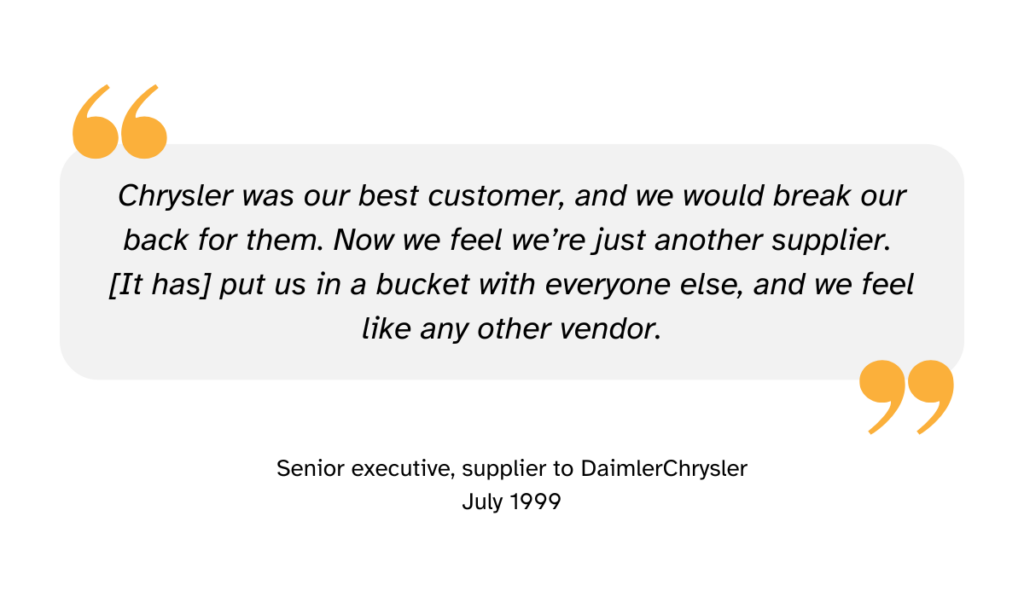
Illustration: Veridion / Quote: Harvard Business Review
If anything, this shows how important it is to value your suppliers. When they feel appreciated and special, your suppliers will act in the same way towards you.
But this executive also pinpoints that when a buyer doesn’t put effort into this relationship, the supplier, too, will not go the extra mile anymore.
One way to keep strong relationships with key suppliers is to reduce unauthorized purchases from others.
Sticking to your approved suppliers will also help you honor contracts and build trust with them.
This trust makes it easier for suppliers to plan, invest in their resources, and offer you better terms and services.
Managing your spend well also opens up opportunities for long-term partnerships.
Suppliers are more likely to invest in innovation when they have a steady, long-term relationship with you. So you can work with suppliers on new product ideas, process improvements, and innovative projects.
This kind of collaboration leads to better products, more efficient processes, and shared savings.
A great example of this is BMW.
Their Supplier Innovation Award encourages suppliers to come up with new and advanced solutions, driving innovation throughout their supply chain.

Source: BMW
This approach has not only improved BMW’s operations but also set a higher standard in the automotive industry, demonstrating the value of maintaining strong supplier relationships through effective spend management.
Effective spend under management can reduce your organization’s risk.
When you bring spend under management, you can:
Let’s focus for a moment on the last point.
When you keep detailed records of all purchases and payments, it’s easier to spot unusual or suspicious activities and prevent fraud.
Unfortunately, fraud is ever-present in procurement and costs companies between $10,000 and $150,000 per year.
Not to mention that it also causes issues with suppliers and tarnishes your reputation.
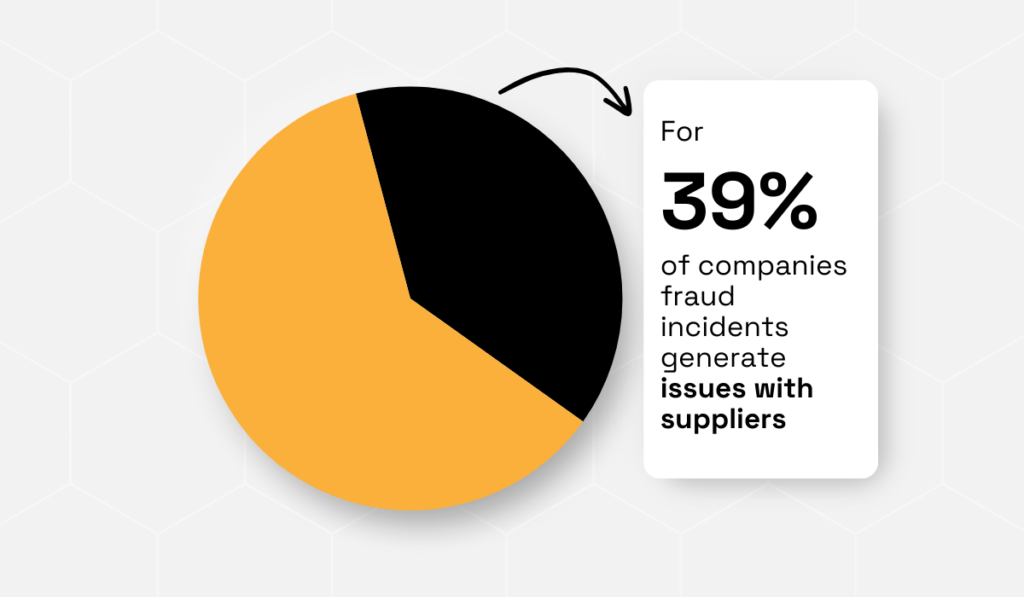
Illustration: Veridion / Data: Trustpair
But with better control over your spending, you can make sure all expenditures are justified, authorized, and in line with company policies.
Reducing maverick spend is another way to cut risk.
Unauthorized purchases bypass necessary checks, which makes it more likely that you will end up buying substandard or non-compliant products.
However, when you manage more of your spend, you ensure all purchases are made from approved suppliers who have been vetted for quality, reliability, and compliance.
The same goes for your sustainability commitment.
If employees don’t follow procurement strategies and buy from random suppliers who don’t meet your ESG criteria, it can harm your reputation and integrity.
Let’s say your company is committed to sourcing materials from suppliers that adhere to certain environmental and social guidelines.
If an employee makes an unauthorized purchase from a supplier that does not meet these standards, it could lead to reputational damage and even to potential legal issues.
Bottom line?
Procurement risks are varied, but many can be reduced with better visibility and control over your spend.
Now that we’ve explored the benefits of managing your spend, let’s see how technology can help you increase your SUM.
The key is to have all your spend data in one accessible place so you can make better, more informed decisions.
Scott Macfee, CEO at SpendHQ, sums it up perfectly:
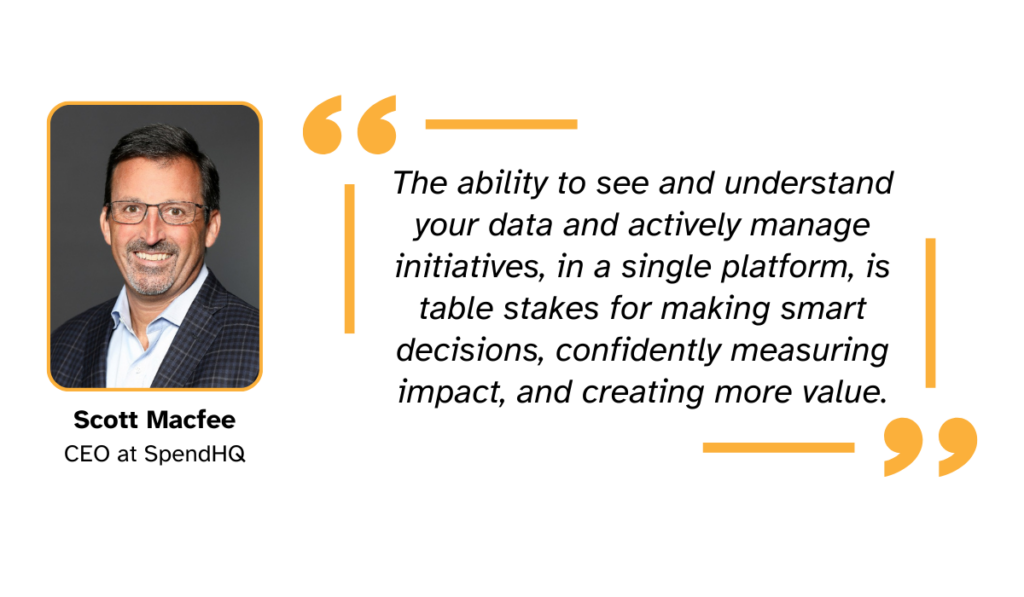
Illustration: Veridion / Quote: SpendHQ
Essentially, having everything in one spot simplifies decision-making and boosts your spend management capabilities.
Let’s see which procurement tools can make this happen.
As we mentioned many days today, one major challenge in spend management is maverick spend—those unauthorized purchases that slip through the cracks.
This often happens because traditional purchase-to-pay (P2P) systems are slow, causing frustration and leading people to bypass procurement rules.
The solution?
Procurement software that automates these processes and also speeds up approvals.
For that reason, it would also be wise to look for a tool that has mobile-friendly features or comes as an app so you can approve purchases on the go.
Another common issue is a lack of visibility when your spend data is scattered across different systems.
According to SpendHQ, nearly half of companies struggle with this problem.
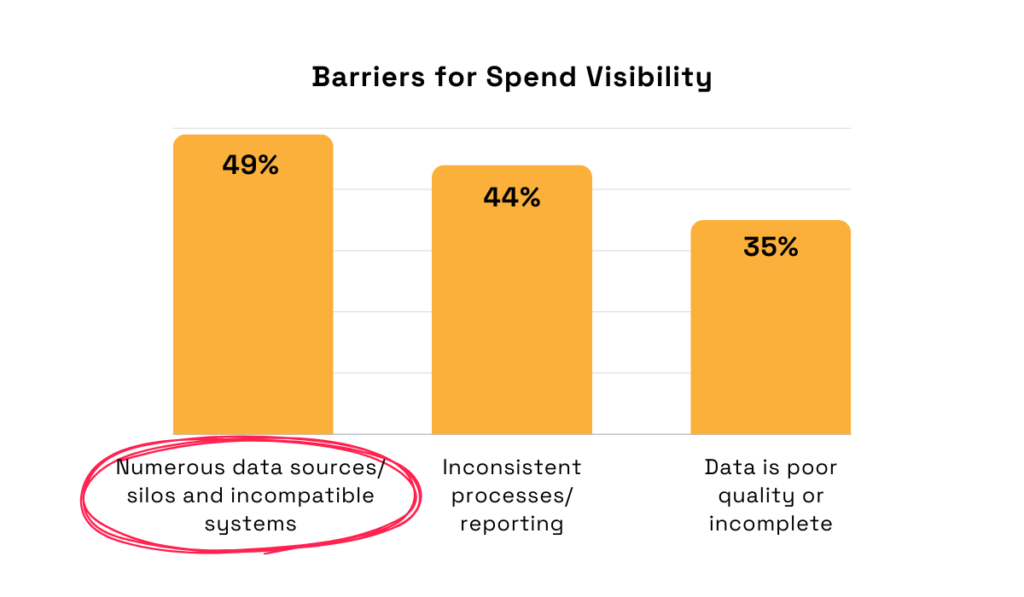
Illustration: Veridion / Data: SpendHQ
The answer is spend management software that consolidates all your spend data into one central platform.
This allows you to track and analyze spending more effectively.
Next are spend analysis tools that will help you establish where the unmanaged spend is going.
You can then communicate this with the rest of the stakeholders and the procurement team and establish more strict procurement policies.
For example, Horizon Therapeutics, a leader in bio-pharma, utilized SpendHQ’s spend analytics to improve its procurement processes.
They integrated SpendHQ with their SAP system to improve spend visibility and collaboration.
This technology allowed them to analyze spend data more effectively, reduce unmanaged spend, as well as make decisions to work with the same suppliers where possible and achieve savings.
Their senior director of procurement noted:
“If I have information first on their spend, I can sit down with them and talk specifically about certain subcategories, certain suppliers, the different brands that we have where we might work with the same suppliers, and bring that into a collaborative environment.”
Investing in better supplier management practices can have a big impact on company spending, too.
And before that, investing in better supplier discovery and sourcing.
Here, big data platforms can help.
Our Veridion, for example, brings weekly updated information on millions of suppliers across the globe.
You can search suppliers based on criteria such as location, certifications, product specifications, and ESG compliance.
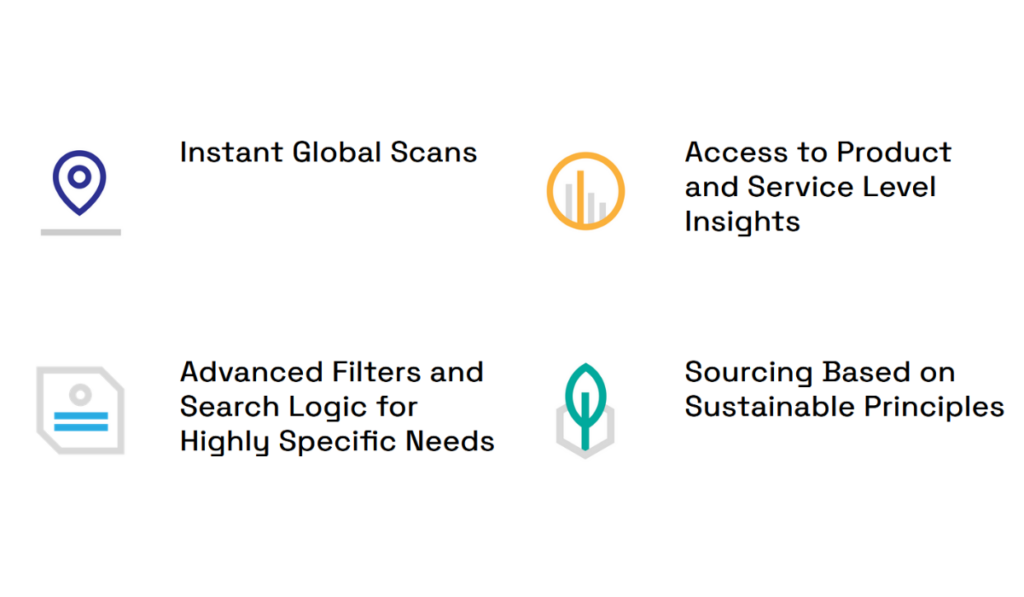
Source: Veridion
This ensures you choose the best suppliers with the fewest risks.
Additionally, Veridion keeps you updated on changes in supplier activities and their financial health, which helps you maintain strong relationships and manage your own spend more efficiently.
To learn more about our tool, try out Veridion’s Data Discovery Portal.
In summary, various tools can help you improve your spend management.
By automating procurement processes, consolidating spend data, and using big data platforms for supplier discovery, you can take control of your spend and achieve better results.
You just need to find the tool that works for you.
Hopefully, we’ve made it crystal clear that bringing more of your spend under management is essential.
This isn’t just some metric to track.
With higher spend under management and better spend control, you’ll see significant cost savings, stronger supplier relationships, and reduced risk in no time.
So, use the right technology and strategic sourcing, define the scope of this metric with your stakeholders and procurement team, and start working on bringing more of your spend under procurement’s wing.
And remember, every bit of control you gain brings you closer to achieving your strategic goals and maximizing your company’s potential.